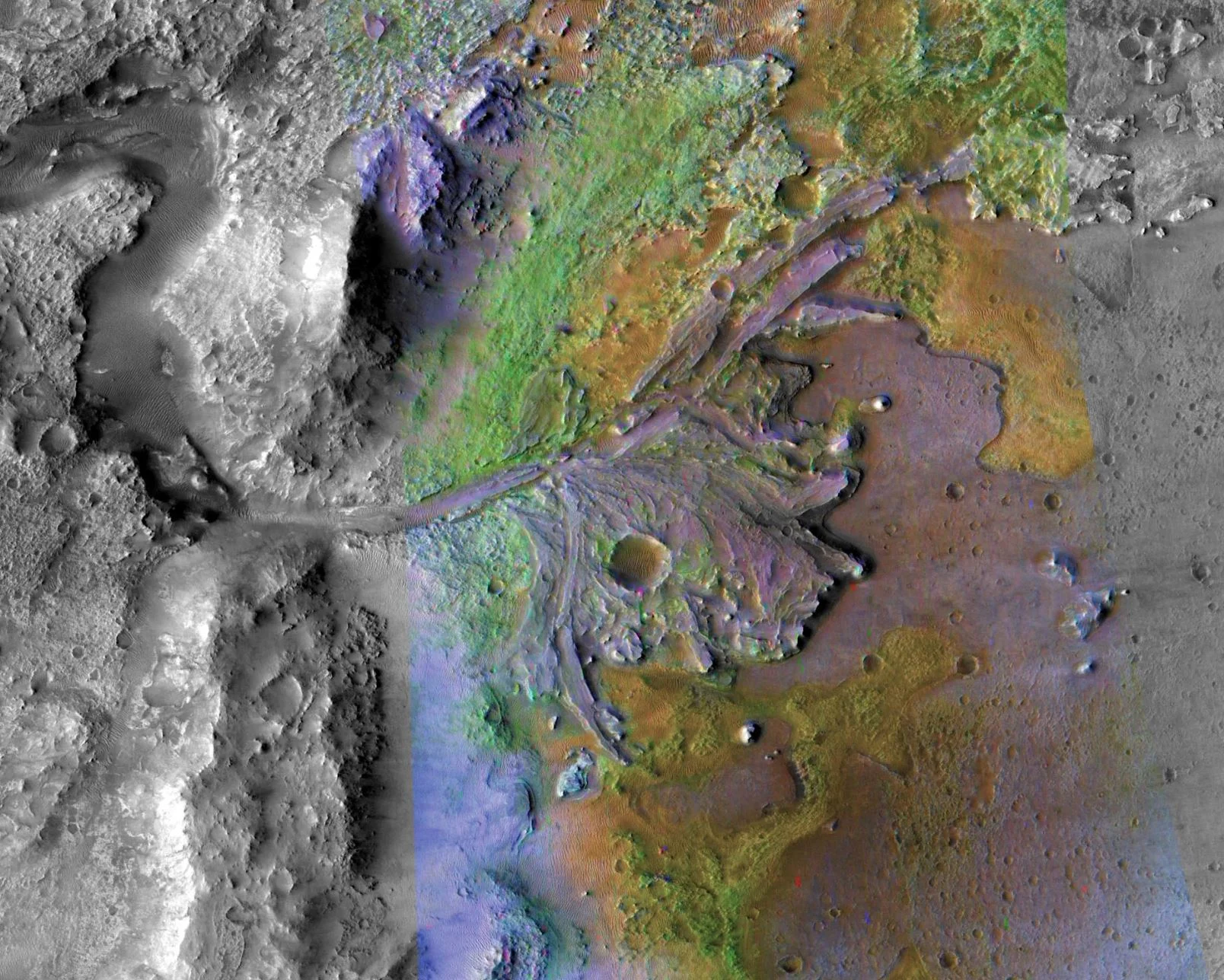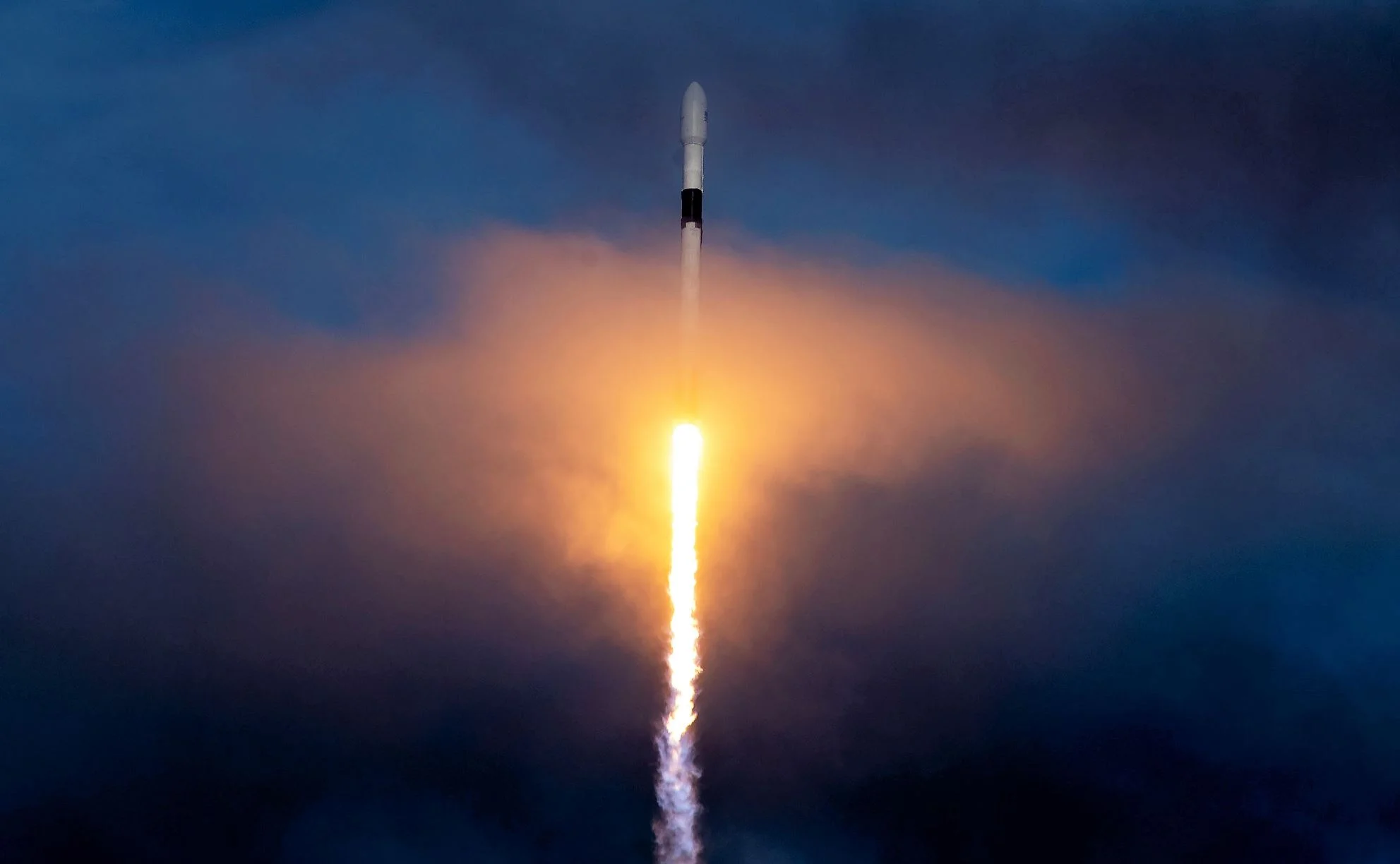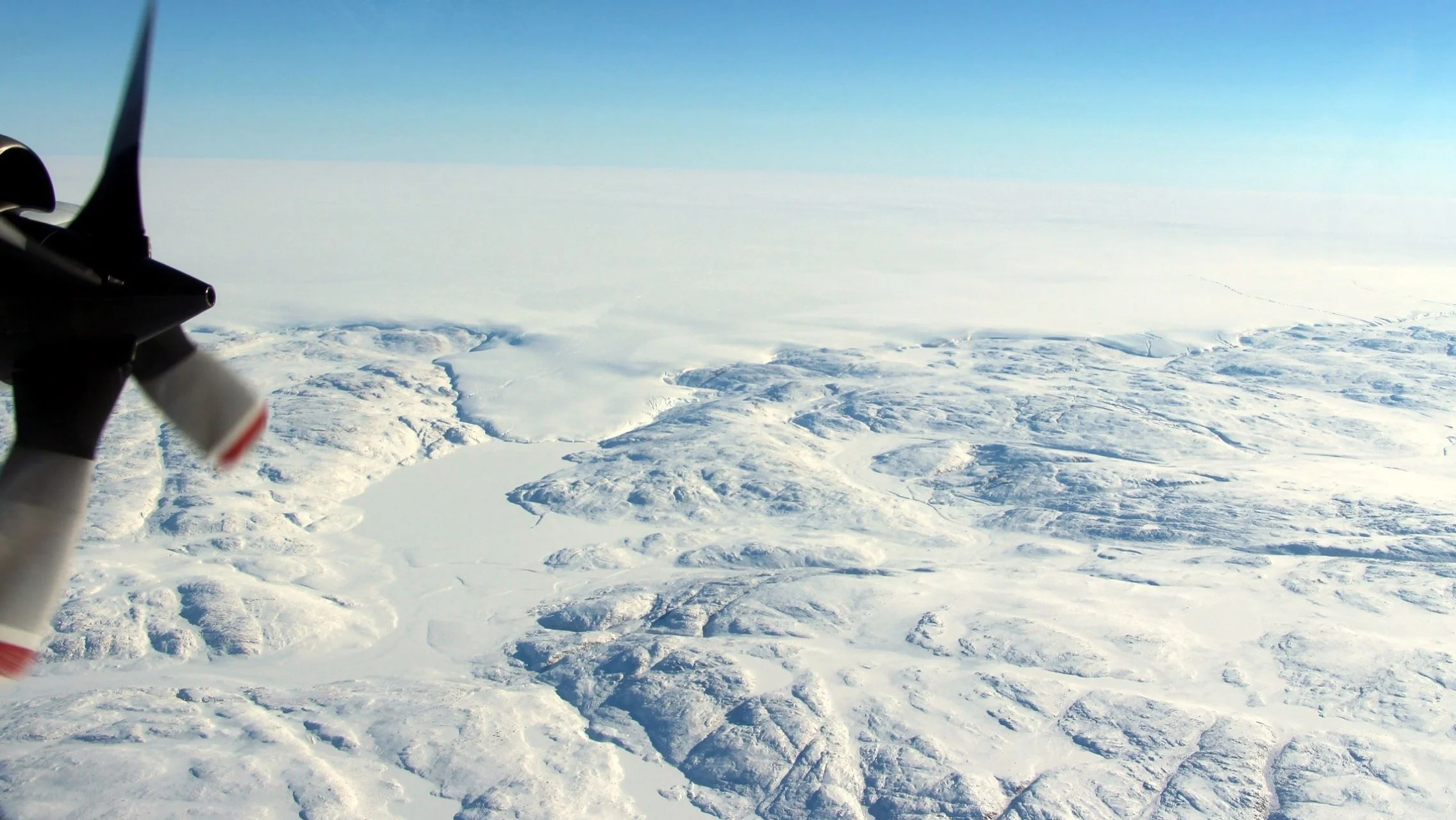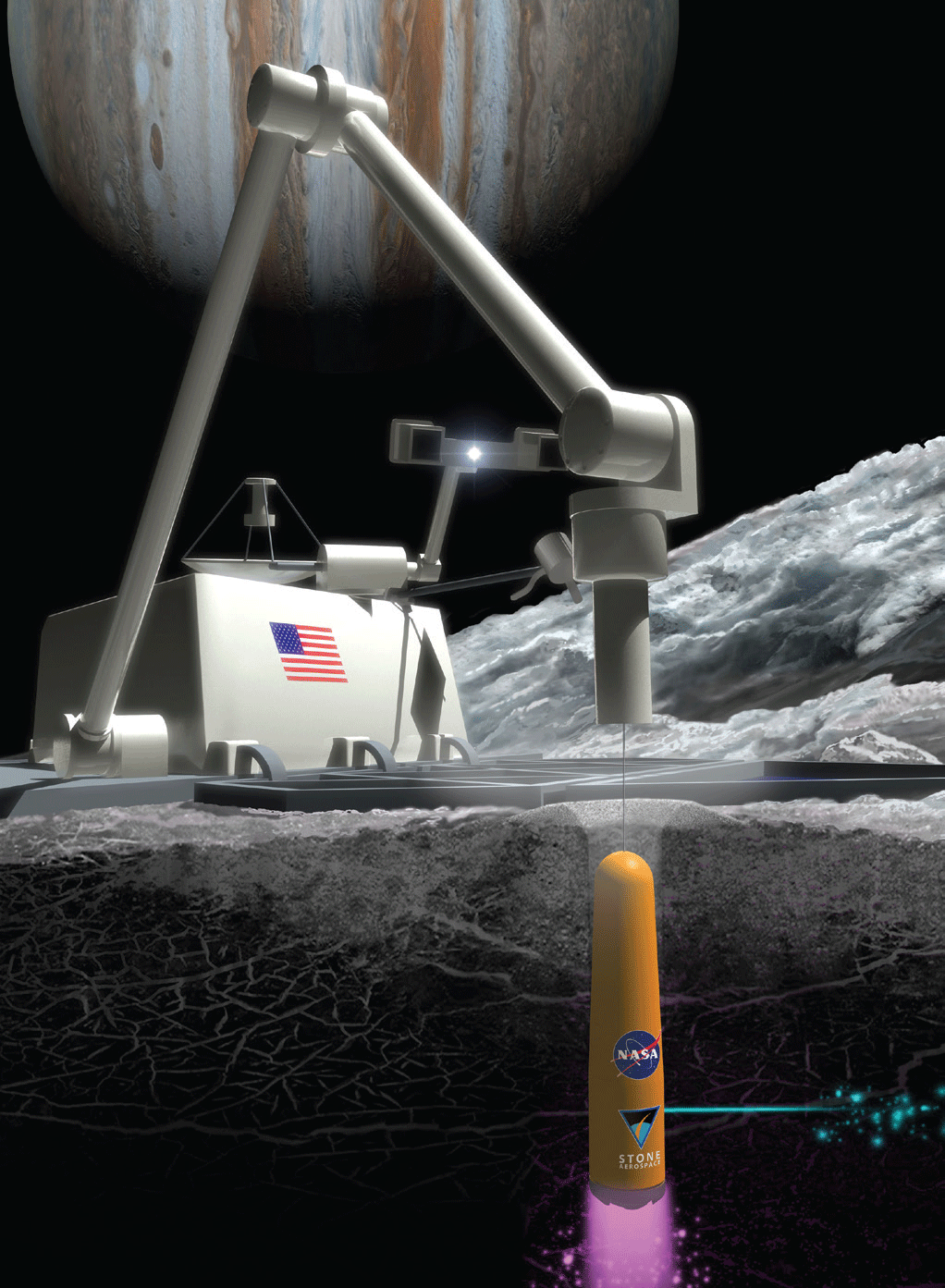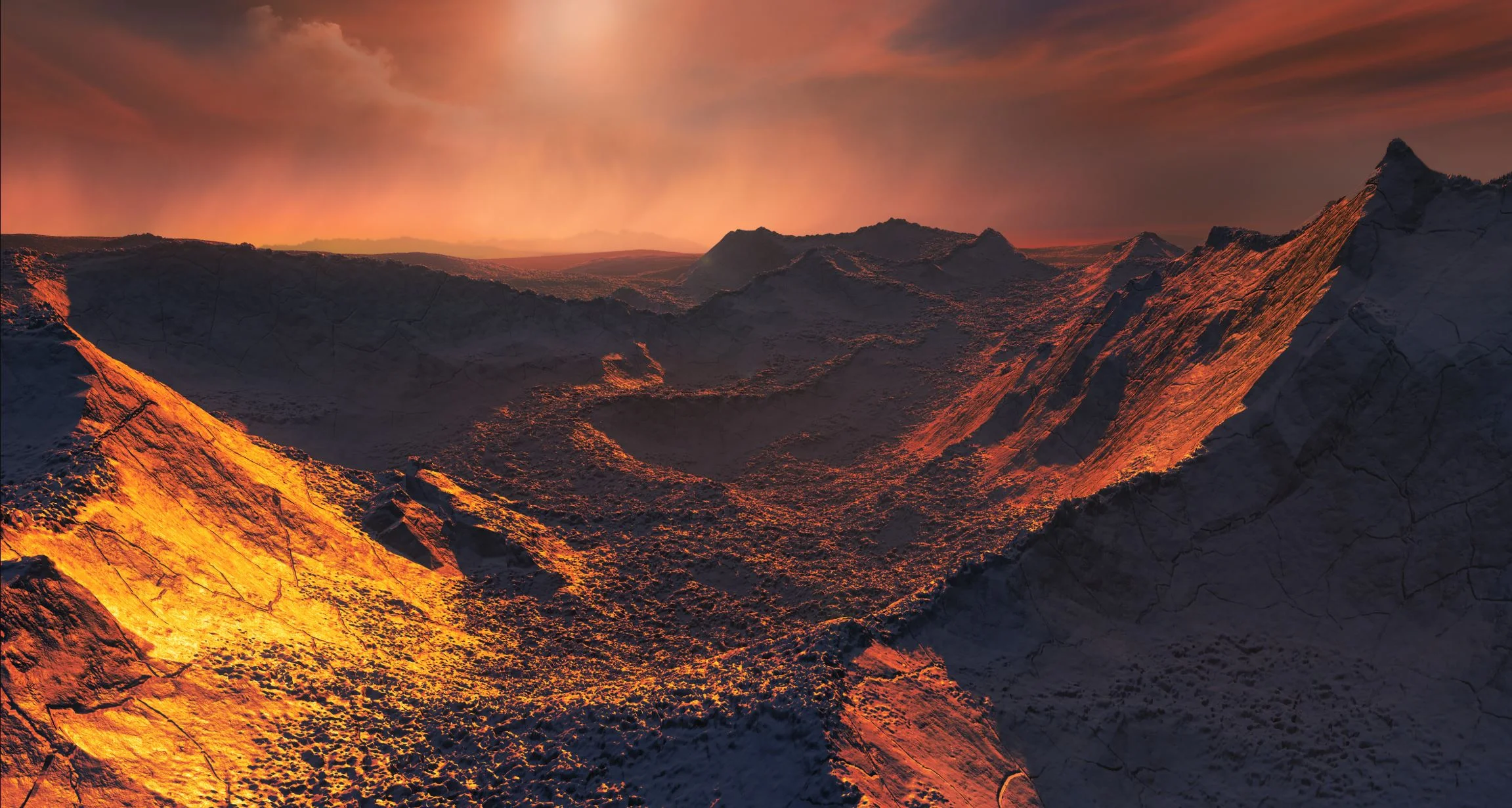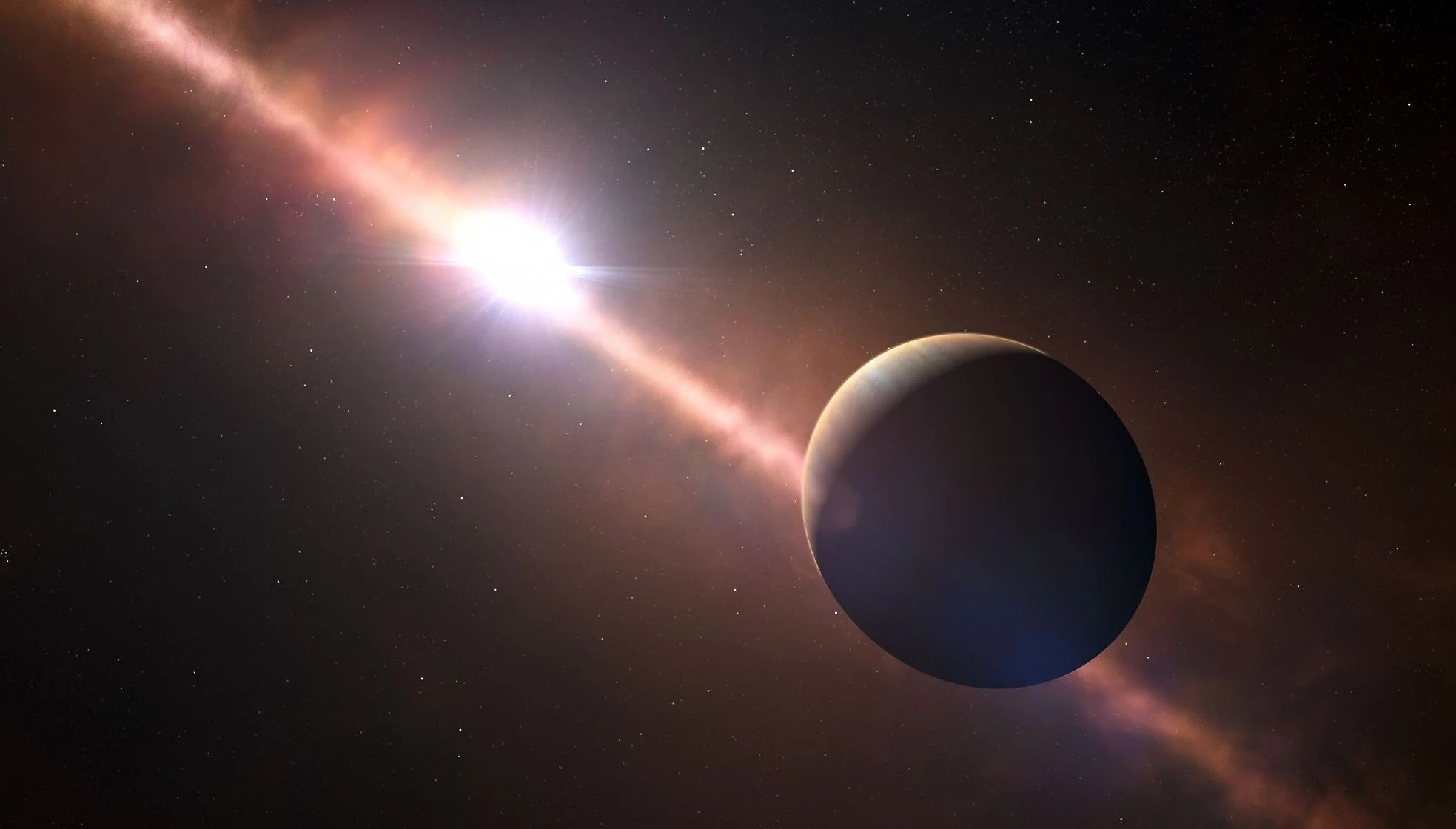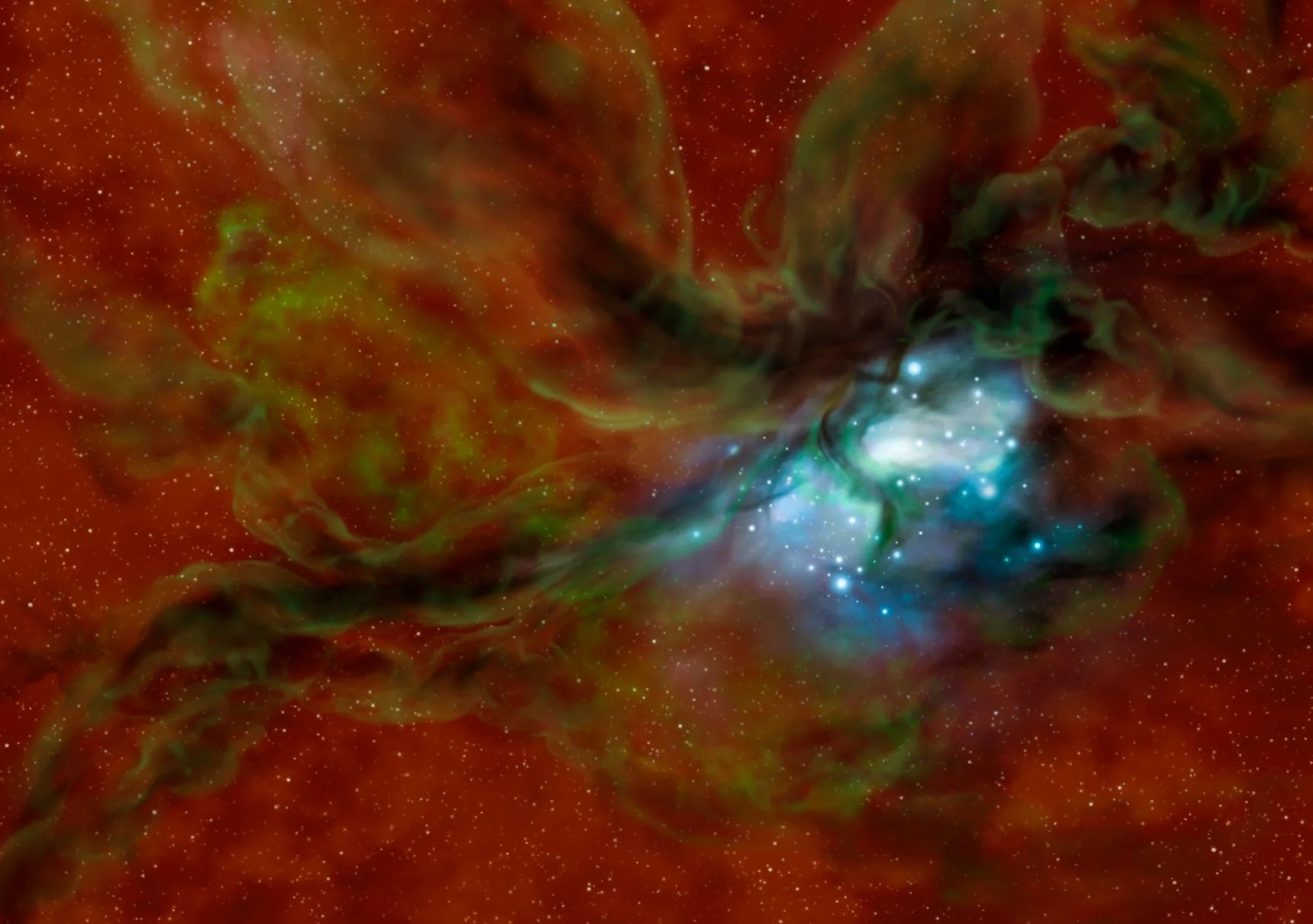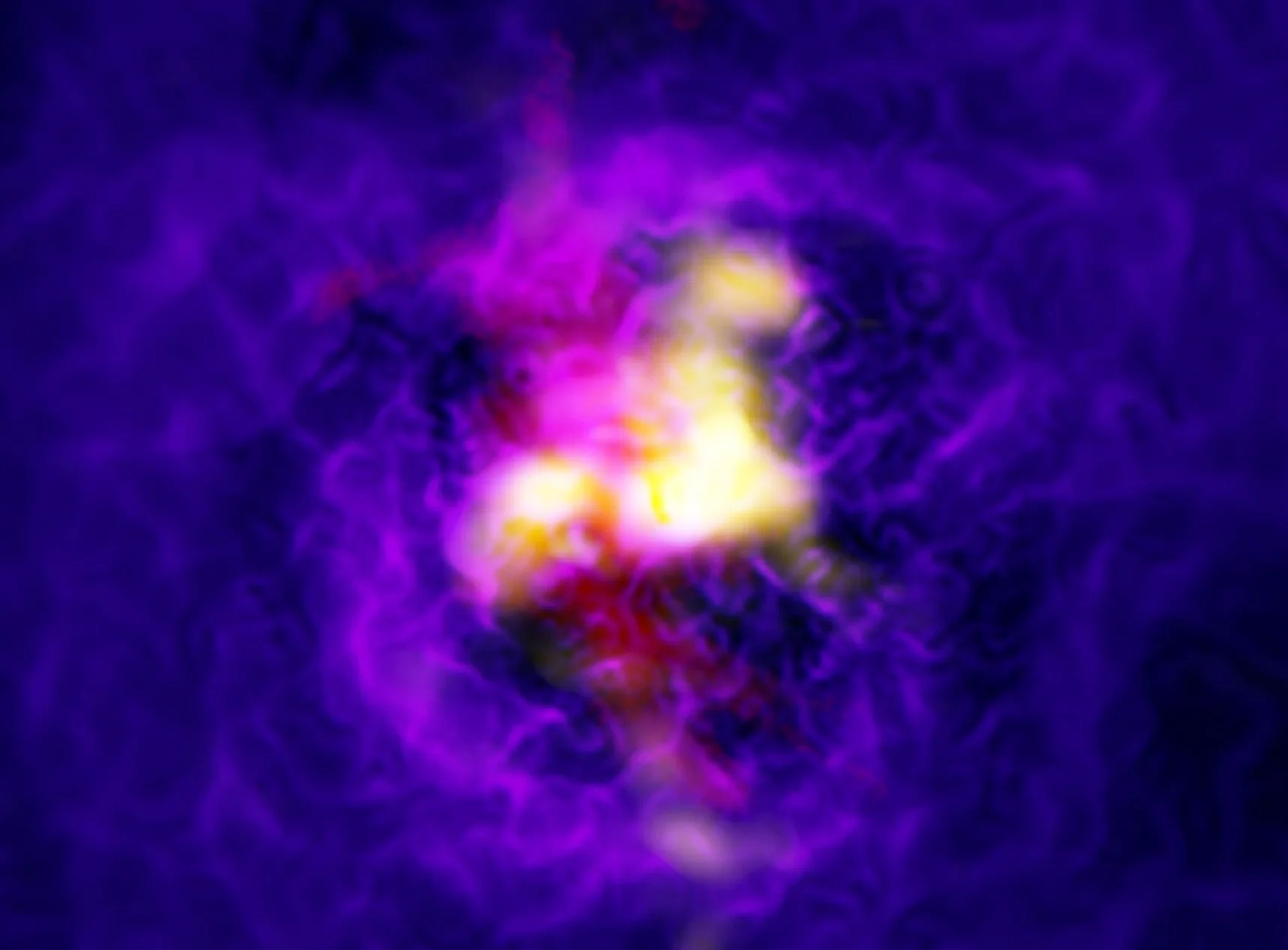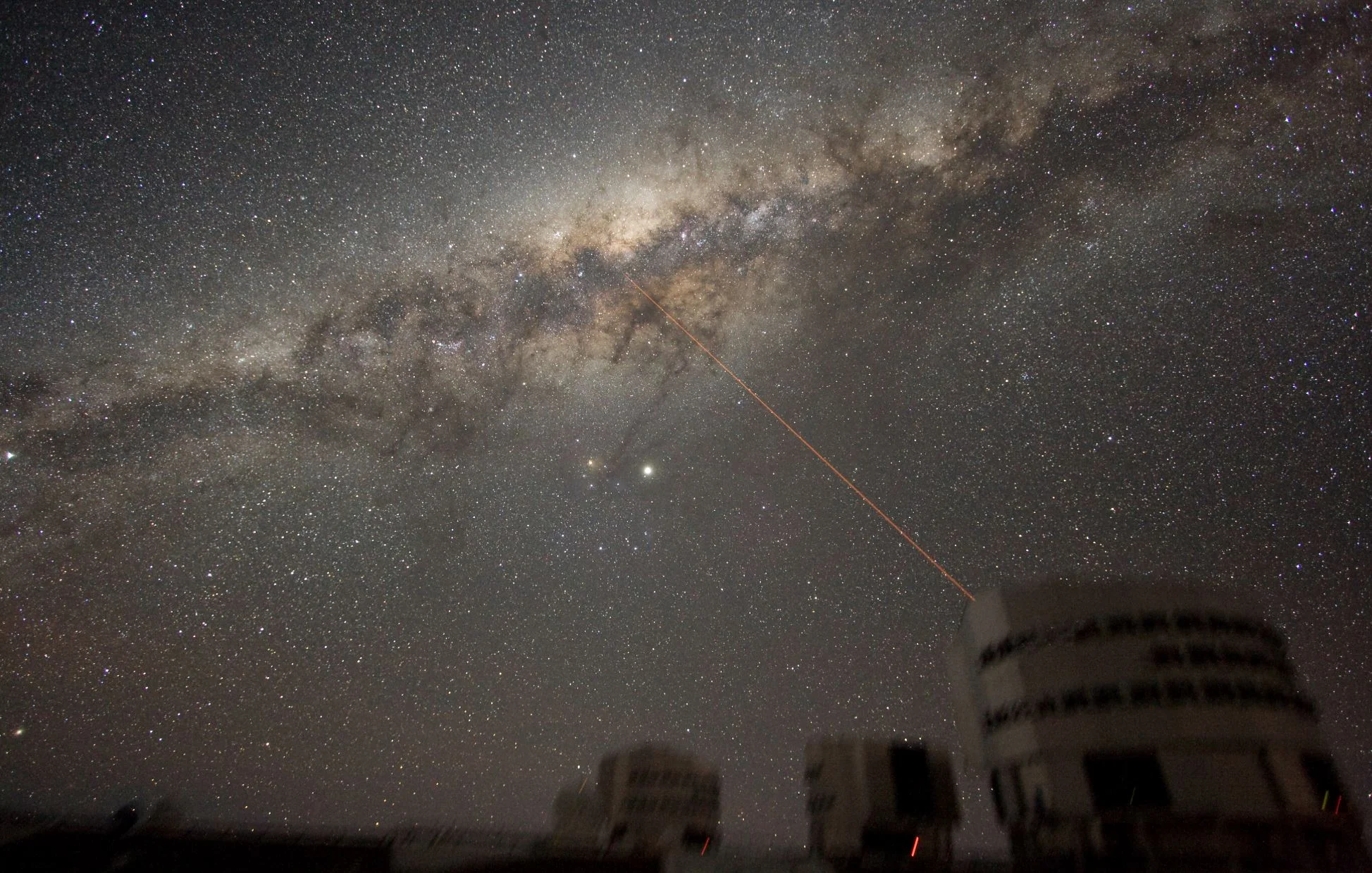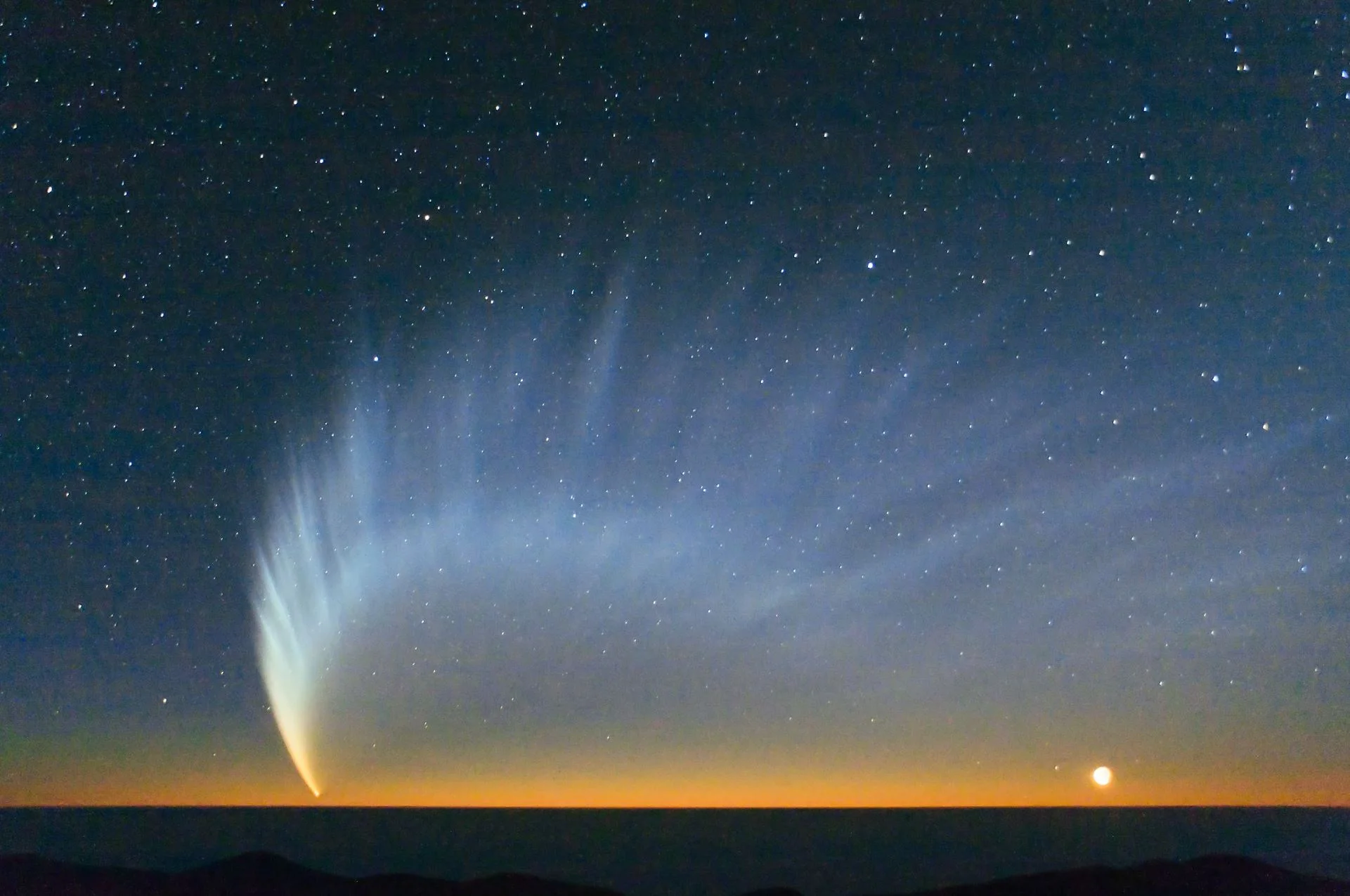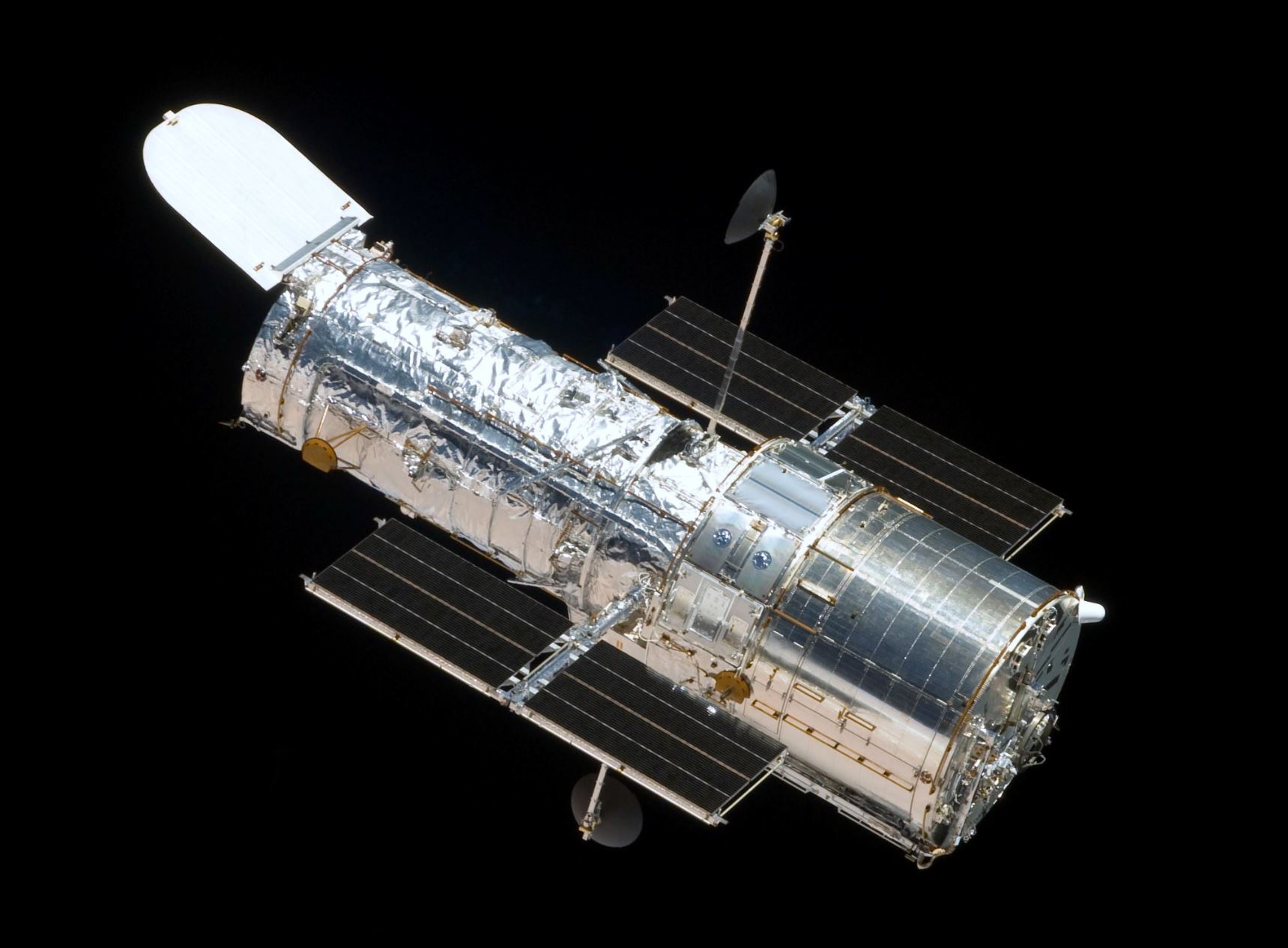NASA has chosen Jezero Crater as the landing site for its upcoming Mars 2020 rover mission after a five year search, during which every available detail of more than 60 candidate locations on the Red Planet was scrutinized and debated by the mission team and the planetary science community.
Abell 1033: To Boldly Go into Colliding Galaxy Clusters
SpaceX Gives More Details on how their Starlink Internet Service Will Work
For years, Elon Musk has talked about his plans to provide broadband internet access to the world using a constellation of satellites. Known as Starlink, this constellation was originally going to of nearly 12,000 low-cost satellites providing a terabit internet service. The first batch of these satellites is scheduled to launch in June of 2019, with the full constellation being deployed by the mid-2020s
An Unexpected Discovery Under Greenland Ice!
An international team of researchers, including a NASA glaciologist, has discovered a large meteorite impact crater hiding beneath more than a half-mile of ice in northwest Greenland. The crater — the first of any size found under the Greenland ice sheet — is one of the 25 largest impact craters on Earth, measuring roughly 1,000 feet deep and more than 19 miles in diameter, an area slightly larger than that inside Washington’s Capital Beltway
Here’s how the ‘brightest’ object in the universe formed
Active galaxies are some of the most luminous and impressive objects in the sky. They tend to be massive, distant and emit extraordinary amounts of energy as material falls into the supermassive black hole that lurks at their centre. Astronomers have recently discovered that some of them are also hidden from plain view by huge amounts of gas and smoke-like dust. But it is unclear how these rare objects form and feed.
Digging into the ice on Europa with lasers
Ever since the Pioneer and Voyager probes passed through the Jovian system in the 1970s, NASA and other space agencies have dreamed of one-day sending a mission to Europa. Beyond Earth, it is considered one of the most promising candidates for finding life, which could exist in the subsurface ocean that lies beneath the moon’s icy crust.
The Most Luminous Galaxy Is Eating Its Neighbors
The most luminous galaxy ever discovered is cannibalizing not one, not two, but at least three of its smaller neighbors, according to a new study published today (Nov. 15) in the journal Science and coauthored by scientists from NASA's Jet Propulsion Laboratory in Pasadena, California. The material that the galaxy is stealing from its neighbors is likely contributing to its uber-brightness, the study shows.
A super-Earth found in our stellar back yard!
Direct Observations of a Planet Orbiting a Star 63 Light-Years Away
In the past thirty years, the number of planets discovered beyond our Solar System has grown exponentially. Unfortunately, due to the limitations of our technology, the vast majority of these exoplanets have been discovered by indirect means, often by detecting the transits of planets in front of their stars (the Transit Method) or by the gravitational influence they exert on their star (the Radial Velocity Method)
Not all the Earth’s Water Came From Comets
Small Tissue Chips in Space a Big Leap Forward for Research
Ancient Star Found that’s Only Slightly Younger than the Universe Itself
According to the most widely-accepted cosmological theory, the first stars in our Universe formed roughly 150 to 1 billion years after the Big Bang. Over time, these stars began to come together to form globular clusters, which slowly coalesced to form the first galaxies – including our very own Milky Way. For some time, astronomers have held that this process began for our galaxy some 13.51 billion years ago.
Cosmic Collisions: SOFIA Unravels the Mysterious Formation of Star Clusters
ALMA and MUSE Detect Galactic Fountain
Observations by ALMA and data from the MUSE spectrograph on ESO’s VLT have revealed a colossal fountain of molecular gas powered by a black hole in the brightest galaxy of the Abell 2597 cluster — the full galactic cycle of inflow and outflow powering this vast cosmic fountain has never before been observed in one system.
Dramatic galaxy collision filled the Milky Way with stars, astronomers discover
Imagine trying to map out your home town using only information you could gather from your window. Even with a pair of binoculars you’d find it a difficult task. Mapping out our own galaxy, the Milky Way, is a similarly daunting mission. Unlike other galaxies that we can view from a distance, we sit inside the Milky Way – around 26,000 light years from its center. This means that when we try to look at the opposite side of the galaxy, much of our view is blocked by the stars and dust in between.
New Insights on Comet Tails Are Blowing in the Solar Wind
NASA Seeks Information for Gateway Cargo Delivery Services
NASA will lead the development of the Gateway, a permanent spaceship orbiting the Moon, to serve as a home base for human and robotic missions to the surface of the Moon and ultimately, Mars. The first orbiting lunar laboratory will be a temporary home and office for astronauts for up to three months at a time, with cargo deliveries likely scheduled when crew are not present.
The Mars InSight Landing Site Is Just Plain Perfect
No doubt about it, NASA explores some of the most awe-inspiring locations in our solar system and beyond. Once seen, who can forget the majesty of astronaut Jim Irwin standing before the stark beauty of the Moon's Hadley Apennine mountain range, of the Hubble Space Telescope's gorgeous "Pillars of Creation" or Cassini's magnificent mosaic of Saturn?
Most Detailed Observations of Material Orbiting close to a Black Hole
ESO’s exquisitely sensitive GRAVITY instrument has added further evidence to the long-standing assumption that a supermassive black hole lurks in the centre of the Milky Way. New observations show clumps of gas swirling around at about 30% of the speed of light on a circular orbit just outside its event horizon — the first time material has been observed orbiting close to the point of no return, and the most detailed observations yet of material orbiting this close to a black hole.
Yes! Hubble is Back in Operation
Since it was first launched into space in 1990, the Hubble Space Telescope has become something of a household name. Over the course of its almost thirty years of service, Hubble has established a reputation as one of NASA’s Great Observatories, giving astronomers the ability to look farther into the cosmic field than ever before and learn new and fascinating things about our Universe.

